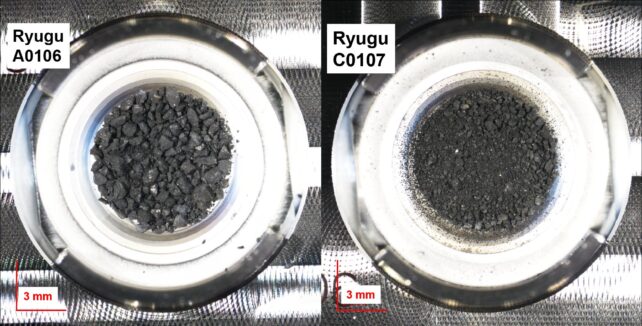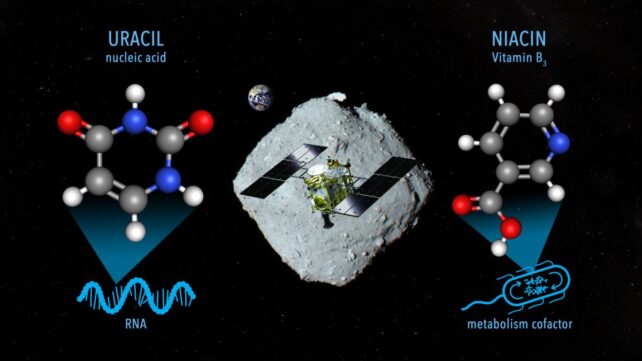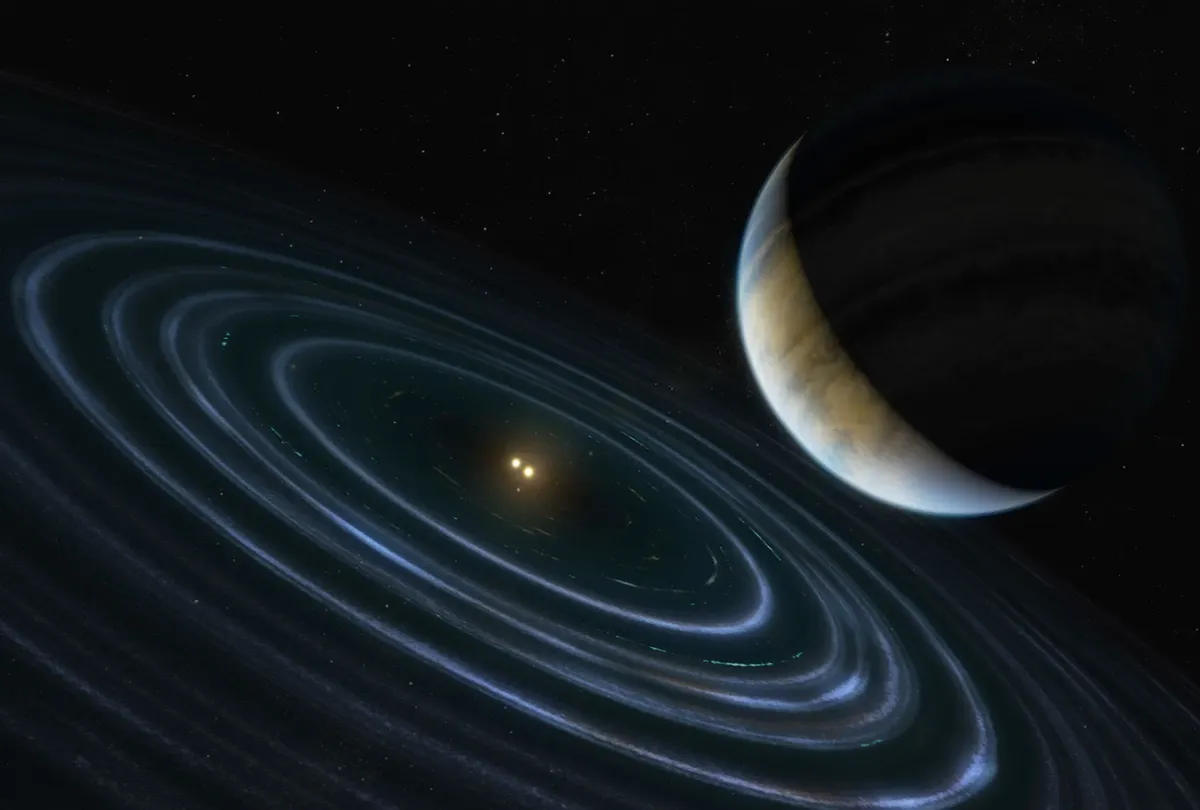Key Takeaways:
- Asteroid dust from Ryugu contains RNA nucleobases like uracil and niacin, vital components for life, confirming their presence in space rocks.
- This discovery adds to the growing evidence suggesting that life’s building blocks might have arrived on Earth through asteroid bombardment in its early history.
- The Hayabusa2 spacecraft collected samples directly from Ryugu, ruling out contamination by Earth’s environment, bolstering the authenticity of the findings.
- Advanced techniques revealed the presence of various biomolecules, including amino acids, amines, and carboxylic acids, supporting the theory of widespread biomolecule existence in carbonaceous meteorites.
- NASA’s OSIRIS-REx mission, having collected samples from asteroid Bennu, promises further insights into asteroid compositions and the origin of life’s building blocks.
Recent revelations from the analysis of asteroid dust, specifically from the distant asteroid Ryugu, have astounded the scientific community. Unveiling the presence of RNA nucleobases within this celestial debris, notably uracil – a fundamental component constituting RNA – and niacin, a form of vitamin B3, the findings illuminate intriguing possibilities about life’s cosmic origins.
This discovery not only adds weight to the idea that the ingredients for life can form in space but also bolsters the hypothesis that these crucial building blocks might have journeyed to Earth through ancient asteroid impacts.
A breakthrough in this research came through the meticulous examination of samples procured directly from asteroid Ryugu by Japan’s Hayabusa2 spacecraft. Astrochemist Yasuhiro Oba, emphasizing the importance of this pristine collection, highlighted the elimination of potential contamination from Earth’s environment, validating the authenticity of these unearthed compounds.
Humanity’s perennial quest to decipher the emergence of life and its prevalence across the vast expanse of our galaxy has found a new avenue of investigation – the hunt for life’s fundamental building blocks beyond our planet. This pursuit gains momentum as evidence mounts, indicating the presence of these essential elements in various cosmic realms.
Observations have revealed these building blocks not only in planet-forming dust but also within the enigmatic clouds of star-forming dust enveloping the core of the Milky Way. Furthermore, multiple instances of these crucial elements have been identified in meteorites that breached Earth’s atmosphere, fortifying the notion that life’s foundational elements might indeed possess an extraterrestrial origin.

To unravel the contents of the pristine Ryugu samples, Oba and his team employed innovative techniques tailored for the detection and identification of minute quantities of nucleobases. Through a meticulous process involving hot water immersion and advanced spectroscopy, they pinpointed the presence of uracil in minute amounts, ranging from 6 to 32 parts per billion, alongside relatively more abundant traces of vitamin B3, between 49 and 99 parts per billion.

Beyond these critical findings, the Ryugu samples revealed a repertoire of other biological molecules, including amino acids, amines, and carboxylic acids – vital components in proteins and metabolic processes. While these compounds differ from those in other carbon-rich meteorites that reached Earth, their similarities underscore the potential prevalence of biomolecules in such cosmic remnants.
Scientists speculate that compounds containing nitrogen, possibly originating from simpler molecules like formaldehyde, ammonia, and hydrogen cyanide, might have contributed to the formation of these essential building blocks on asteroids like Ryugu. While not directly identified in Ryugu’s samples, their existence is presumed, particularly if the asteroid or its parent body once bore a comet-like coating rich in these molecules.
Despite these revelations, Ryugu marks just the initial foray into this cosmic inquiry. NASA’s mission involving asteroid Bennu promises further revelations, with initial studies hinting at organic materials consistent with life’s building blocks within its samples. Comparative analysis between Ryugu and Bennu materials offers a tantalizing opportunity to deepen our understanding of these celestial bodies and their potential role in seeding life on Earth.
The research findings have been documented in the journal Nature Communications.



